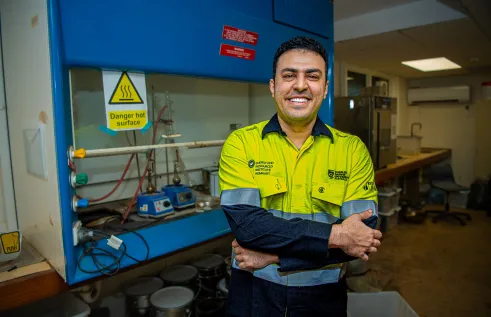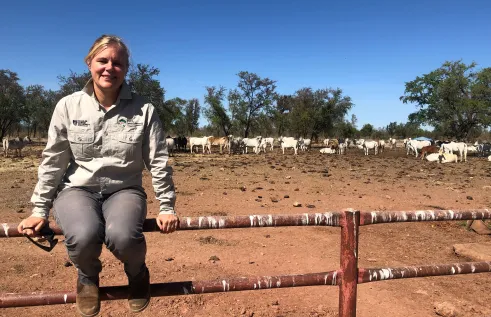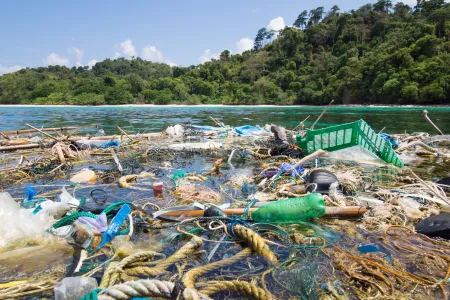News
Drones the latest weapon being used to combat the spike in ghost nets across NT coastline
In a bid to help clear the Gulf of Carpentaria of marine debris, Charles Darwin University (CDU) will undertake a project that will use long-distance uncrewed autonomous aircraft to identify and map the distribution of ghost nets across nearly 958 km of NT coastline.
Ghost nets are abandoned, lost or discarded fishing nets, often many 100’s of meters in length that can drift significant distances across the ocean. Due to ocean currents they congregate in large densities in the Gulf of Carpentaria.
The nets cause injury or death to marine species that may become entangled in them.
CDU’s project, which has received funding of almost $400,000 from the Australian Government as part of the Ghost Nets Innovative Solutions Grants, will use drones and artificial intelligence software routines to identify and quantify the volume of marine debris from remote and difficult to access coastlines.
Leading the project will be CDU’s North Australia Centre for Autonomous Systems (NACAS) with Director Professor Hamish Campbell saying the project will provide immediate environmental benefits across the Gulf of Carpentaria.
“Ghost nets are a significant threat to marine wildlife and coastal bushtucker. A major challenge for ghost-net removal is that nets come ashore along vast tracts of Northern Territory coastline, which are tended to by small communities with limited resources,” Professor Campbell said.
“Consequently, ghost nets are not generally detected and retrieved for prolonged periods, if at all which increases their impact upon wildlife and raising the chances of them being re-floated and deposited elsewhere.”
“This project will provide regularly updated and highly accurate information to ground crews which will help to better strategize recovery operations. This will enable them to collect more nets for the effort and costs involved, reducing the volume of nets within the ocean, and lessening their impact upon marine biodiversity.”
Throughout the project, drones will collect information with a high-resolution hyperspectral sensor.
The aircraft will fly at low altitudes to survey the 45 islands within the Groote Archipelago.
Artificial intelligence (AI) software will be used to develop coastal aerial imagery with NACAS partnering with CDU’s Northern Territory Academic Centre for Cybersecurity and Innovation (ACCI) on this component. ACCI is led by Director, Professor Mamoun Alazab.
As part of the outputs of the project, abundance distribution maps illustrating the ghost-net location and size will be created and provided to the Anindilyakwa Land & Sea Rangers to assist with ghost net retrieval operations.
CDU’s Deputy Vice-Chancellor, Research and Innovation Professor Steve Rogers said this project is a prime example of CDU’s various research centres working together to make a difference.
“At CDU our researchers are deeply connected across all disciplines and this project shows how our different centres can come together for the betterment of the Northern Territory,” Professor Rogers said.
Member from Lingiari Marion Scrymgour said that it is very encouraging to see CDU apply this state-of-the-art technology to marine conservation to get rid of more ghost nets, which are the scourge of the Gulf Sea Country.
“This project funded by the Australian Government will complement the work of the Anindilyakwa Sea Rangers. We are also funding a dedicated vessel, located on Groote Island, which is specially fitted out to locate and retrieve ghost nets.”
“Every year ghost nets kill hundreds of marine species, including animals that are culturally very important and or endangered, such as turtles, dugongs and dolphins. It’s heartening to see a multi-pronged effort emerging that will really make a difference in this area.”
Related Articles

Where rubber meets the road: Old tyres are key to building tougher roads
Almost half of the Northern Territory’s worn-out tyres end up in landfills – with the rest exported interstate for recycling – but a study led by Charles Darwin University (CDU) is repurposing the discarded rubber to build stronger, sustainable roads that meet the NT’s unique needs.
Read more about Where rubber meets the road: Old tyres are key to building tougher roads
Social media subjecting Black women to radicalised digital policing
Influencers use oppression, manipulation and weaponisation to police Black women on social media, according to new research uncovering the entrenched nature of digital racism.
Read more about Social media subjecting Black women to radicalised digital policing
Moo-ving the boundaries: New research evaluates virtual fences for use on NT cattle stations
Cattle producers in Northern Australia face unique challenges when adapting tools like virtual fences on their properties, but new research from Charles Darwin University (CDU) is set to break down the barriers to this technology.
Read more about Moo-ving the boundaries: New research evaluates virtual fences for use on NT cattle stations
